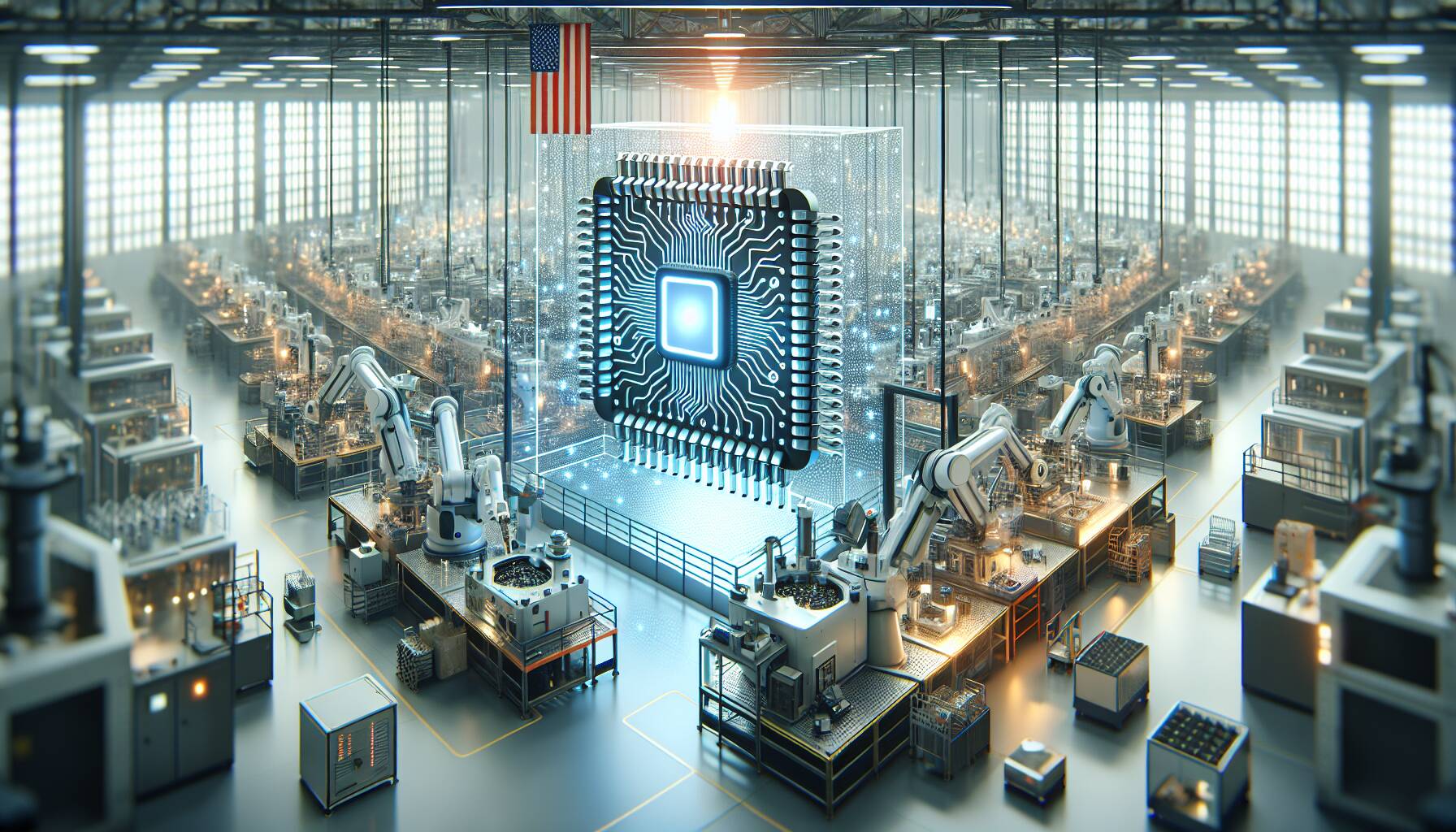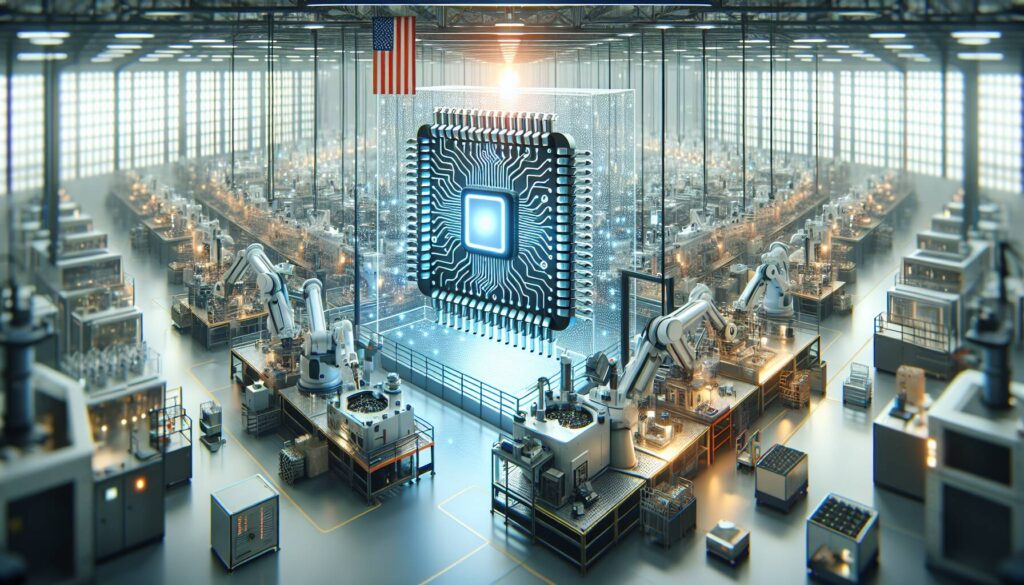Nvidia has announced a significant development in its operations, revealing plans to manufacture its next generation of AI chips and supercomputers entirely within the United States for the first time. This shift comes as the demand for AI infrastructure continues to rise, coinciding with a broader trend towards localizing advanced tech manufacturing. For cryptocurrency miners, this transition could open new avenues as they aim to repurpose their existing facilities for AI and high-performance computing (HPC).
Traditionally focused on maximizing hashing power, many crypto miners have begun exploring their roles within the expanding AI ecosystem. With established access to large-scale power and cooling systems, these operators are well-positioned to support the rising need for AI computation. As the demand for AI technologies surges, crypto miners could leverage their infrastructure and logistics expertise to integrate into this burgeoning market.
“The first time the engines of the world’s AI infrastructure are being built in the United States,”
Nvidia’s ambitious plans include securing over a million square feet of manufacturing space across Arizona and Texas for the production and testing of its Blackwell chips and AI systems. Production has already commenced at TSMC’s facility in Phoenix, and the company is collaborating with manufacturers like Foxconn and Wistron to establish supercomputer factories in Texas, with full operations expected within 12 to 15 months.
However, recent tariff changes initiated by former President Donald Trump have raised concerns among miners as the increased costs for ASIC miners, electrical components, and networking hardware could affect profitability. Despite these challenges, Nvidia’s efforts are poised to significantly impact the AI infrastructure landscape, with projections suggesting support for up to half a trillion dollars’ worth of AI investments over the next four years.

Nvidia’s Shift to Domestic AI Chip Manufacturing
Nvidia’s recent announcement regarding its plans to manufacture AI chips in the U.S. has several significant implications for various stakeholders, including crypto miners and the broader tech industry.
- Domestic Manufacturing: Nvidia plans to produce its next generation of AI chips and supercomputers entirely in the U.S.
- Increased Demand for AI Infrastructure: The move reflects a rising demand for AI technologies, indicating potential job growth and investment opportunities in the U.S.
- New Opportunities for Crypto Miners:
- Crypto miners may repurpose their facilities for AI and high-performance computing (HPC), leveraging existing power and cooling systems.
- This shift enables crypto miners to transition into the AI economy, potentially diversifying their revenue streams.
- Challenges from Tariffs: Recent tariffs imposed by the U.S. government could raise costs for miners, affecting their operations and profitability.
- New Manufacturing Facilities:
- Nvidia has secured over a million square feet of space in Arizona and Texas for chip production.
- Supercomputer factories are being established in Texas in collaboration with Foxconn and Wistron.
- Full production is expected to commence within 12 to 15 months.
- Significant Economic Impact: Nvidia anticipates supporting up to half a trillion dollars’ worth of AI infrastructure in the next four years, highlighting the potential for substantial economic growth.
- Change in Global Manufacturing Dynamics: This marks a strategic shift for Nvidia, which has historically relied on overseas manufacturing, suggesting a broader trend toward localized tech manufacturing.
“The first time the engines of the world’s AI infrastructure are being built in the United States.” – Jensen Huang, CEO of Nvidia
Nvidia’s Bold U.S. Manufacturing Move: A Game Changer for AI and Crypto Industries
Nvidia’s recent announcement to manufacture its next generation of AI chips and supercomputers entirely within the United States is a significant pivot for the tech giant and the broader tech industry. Unlike previous strategies relying heavily on overseas production, this initiative not only signals a drive towards localized tech manufacturing but also responds to the surging demand for robust AI infrastructure. The company’s commitment to facilities in Arizona and Texas solidifies its position at the forefront of the AI revolution, setting it apart from competitors still tethered to international supply chains.
In comparison to other industry players, Nvidia’s move has distinct competitive advantages. Firstly, having production stateside means reduced dependency on foreign supply chains that have proven vulnerable in recent years. This can lead to faster product cycles and elevated responsiveness to market demands. Furthermore, by engaging local manufacturing partners like TSMC and setting up supercomputer factories with Foxconn and Wistron, Nvidia is not only bolstering the domestic economy but also minimizing logistical challenges associated with overseas production.
On the flip side, the initiative also carries potential drawbacks. The introduction of tariffs on critical components could inflate costs for both Nvidia and its partners, which might, in turn, affect the pricing structures for end-users. Crypto miners, who are transitioning to AI and high-performance computing are likely caught in this crossfire. While their existing infrastructure can facilitate AI deployment, the rising costs associated with tariffs may make it difficult for these miners to adapt quickly and profitably.
This strategic manufacturing shift could also benefit companies focusing on AI workload solutions, creating new business opportunities. Furthermore, firms involved in the logistics and supply of materials for semiconductor manufacturing might see growth as demand escalates for localized production. However, businesses relying on imported technology may face challenges and increased operational costs, potentially leading to financial strain.
Overall, Nvidia’s calculated decision is poised to redefine the landscape of AI technology while posing challenges for traditional crypto miners. As the dust settles, it will be essential to observe how these dynamic shifts affect the market’s ecosystem and the various players within it.

















